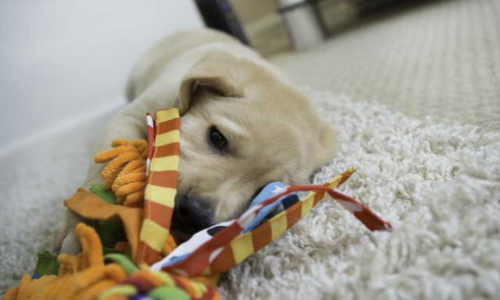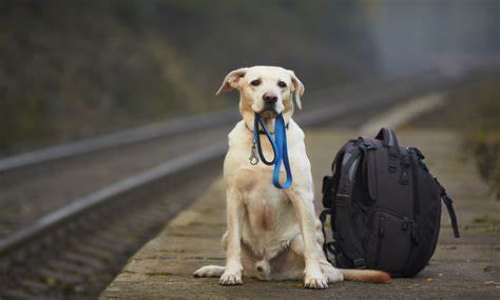Creating a Safe and Comforting Environment for Your Dog
Why is it important to create a safe space for your dog?
The benefits of creating a safe and comfortable environment
Establishing a comfortable environment for your dog fortifies their sense of security, leading to a more relaxed and happier pet. This foundation allows your dog to develop positive associations with their home, significantly reducing stress and anxiety. For dog owners, this translates into a more harmonious living situation, with your pup feeling safe and loved. A content dog is less likely to display destructive behaviours, demonstrating the profound impact of a nurturing environment on their overall disposition.
Understanding how a safe space can reduce anxiety in dogs
Dogs, much like humans, can experience a range of emotions, including anxiety. A safe space for your dog, be it a quiet corner or a special room, acts as a sanctuary where your dog can escape stressful situations. This haven plays a critical role in mitigating feelings of fear or nervousness, especially in anxious dogs. When a dog knows they have a secure area to retreat to, it significantly eases their stress levels, promoting a sense of calm throughout their daily life.
How a secure environment helps with behavioural issues
Behavioural issues in dogs often stem from a place of fear or discomfort. By creating a safe space for your dog, you provide an outlet for their anxieties, which can considerably diminish the occurrence of unwanted behaviours, like excessive barking or chewing. Additionally, this safe haven supports the development of healthy coping mechanisms, enabling dogs to better manage their emotions. A dog that feels secure is more receptive to training and positive reinforcement, laying the groundwork for a well-balanced pet.
How to create a calming environment for your dog in noisy areas
Utilising white noise to combat loud noises around your home
In homes where loud noises are a regular occurrence, employing white noise can mask these disturbances, creating a calming environment for your dog. A white noise machine or a simple fan can provide a consistent auditory backdrop, reducing the startling impact of sudden sounds. This constant and soothing sound helps keep your dog at ease, especially in areas where noise is unavoidable, ensuring they remain relaxed and content.
Creating a safe and accessible area away from the noise
To shield your pup from overwhelming noise, it's crucial to establish a safe space away from the common sources of loud sounds within your home. This area should be readily accessible to your dog, allowing them to retreat whenever they feel the need. Incorporating comfortable bedding and their favourite toys can enhance this space, making it an inviting sanctuary for your dog to seek refuge and peace.
The role of bedding and placement in mitigating noise for your pup
The choice of bedding and its placement plays a vital role in creating a noise-resistant sanctuary for your dog. A high-quality dog bed, positioned in a quiet corner or a secluded room, can significantly dampen the intrusion of external sounds. This dedicated spot serves as a secure base where your dog can relax, undisturbed by the chaotic world outside. The right bedding not only comforts your dog but also acts as a physical barrier against noise, aiding in the creation of a tranquil environment.
Setting up the perfect crate as a safe space for your dog
Choosing the right crate for your dog’s needs and size
Selecting an appropriate crate is paramount in ensuring your dog's comfort and safety. The crate should be spacious enough for your dog to stand, turn around, and lie down comfortably, but cosy enough to feel secure. It's vital to consider the material, ventilation, and ease of cleaning when choosing the right crate for your dog, ensuring it meets all their needs and preferences.
Tips on making the crate a welcoming space
To transform a crate into a welcoming haven, introduce soft bedding and familiar objects like a beloved toy or a piece of your clothing. These items imbue the space with comfort and personal scent, creating positive associations for your dog. It's also beneficial to place the crate in a quiet area of your home where your dog can observe the family's activities without being in the direct path of hustle and bustle, further promoting a sense of security.
Integrating the crate into your dog’s daily routine
Incorporating the crate into your dog's daily life fosters familiarity and ease with the space. Gradually introduce your dog to the crate with short, positive experiences, accompanied by treats and praise. Make sure your dog associates their crate with positive outcomes, ensuring it becomes a space they willingly enter. Over time, your dog should view the crate as their personal retreat, vital for moments when they seek solitude or rest.
Ensuring your dog feels comfortable and safe around your home
Ways to create a safe and welcoming home for your dog
Creating a safe and welcoming home for your dog encompasses more than just physical spaces; it involves nurturing an atmosphere of security and love. Regular and predictable routines help your dog feel secure, as do consistent training and positive reinforcement practices. Attention to your dog's emotional needs, such as companionship, playtime, and affection, reinforce their sense of belonging and well-being within the home.
Importance of food and water placement in creating a comforting environment
Strategic placement of food and water bowls can further enhance your dog's comfort. These essentials should be placed in an area that's easily accessible, yet away from high-traffic zones to avoid stress during feeding times. Ensuring these areas are clean and inviting encourages your dog to stay hydrated and nourished, contributing significantly to their overall health and happiness.
Adjusting your home to eliminate risks and ensure it's dog-friendly
To fully safeguard your dog's well-being, scrutinise your home through their eyes, identifying and mitigating potential hazards. Secure loose wires, ensure toxic substances are out of reach, and create barriers to unsafe areas. By taking these precautions, you guarantee that your home is not only a comfortable environment but also a secure one, allowing your dog the freedom to explore without risk.
Utilising food, water, and toys to create a calming environment
How to properly feed your dog to ensure they feel secure
Feeding your dog at consistent times each day establishes a routine that can significantly reduce anxiety. The predictability of meal times provides a sense of security and order for your dog, reinforcing their trust in you as their provider. Choosing nutritious food that meets their dietary needs further supports their physical and emotional health, laying a foundation for a content and comfortable life.
Choosing the right toys to help with separation anxiety and stress
Toys play a crucial role in managing separation anxiety and stress in dogs. Select toys that engage your dog's mind and body, like puzzle feeders or chew toys, to keep them occupied and mentally stimulated, especially when they're alone. These distractions can help mitigate feelings of loneliness and boredom, ensuring your dog remains happy and less prone to anxiety-related behaviours.
Strategic placement of food and water areas in your home
Consider the layout of your home when determining the placement of your dog's food and water stations. Opt for quiet corners or dedicated spaces where your dog can eat and drink in peace, away from the hustle and bustle of household activities. This thoughtful placement contributes to a calming environment, fostering a routine that nurtures your dog's well-being and security.
Create a Safe Space for Your Dog
Ensuring a safe space for your dog is crucial in fostering their overall health and happiness. Dogs, like humans, seek security and comfort in their environment. Providing a designated area where your dog feels safe can help reduce their stress levels and anxiety.
Benefits of Creating a Safe Environment for Your Dog
By creating a safe space for your dog, you are giving them a sanctuary where they can relax and unwind. This not only promotes their physical well-being but also contributes to their mental health. Dogs thrive in environments where they feel protected and can retreat when needed.
Ways to Create a Safe Space Around Your Home
There are several ways to establish a safe space for your dog within your home. Setting up a cosy dog bed in a quiet corner or utilising a crate can provide a sense of security for your pup. Make sure the area is free from potential hazards and is easily accessible to your dog.
Making Your Dog Feel Safe and Accessible
To make your dog feel safe and accessible, consider introducing calming elements such as white noise or comforting bedding. Spending quality time with your dog in their safe space can also strengthen the bond between you and help them feel more secure.
Calming Your Dog's Environment
Creating a calming atmosphere for your dog is essential in reducing their stress and anxiety levels. Dogs are sensitive beings that can easily pick up on their surroundings, so it's important to ensure a tranquil environment for them to thrive.
Using White Noise to Calm Your Dog
White noise machines can be a valuable tool in soothing your dog's nerves, especially in noisy environments. The gentle hum of white noise can mask loud sounds and create a serene atmosphere for your furry friend.
Bedding and Safe Areas in Your Home
Providing comfortable bedding and safe areas in your home allows your dog to have designated spots where they feel secure. Whether it's a cosy corner or a plush dog bed, ensuring these spaces are accessible can help alleviate stress and promote relaxation.
Dealing with Noise Sensitivity
Noise sensitivity is a common issue amongst dogs and can significantly impact their well-being. Understanding how noise affects your dog and taking steps to manage their reactions can help create a more peaceful environment for them.
Managing Loud Noises and Your Dog's Reactions
Dogs may react differently to loud noises, with some becoming anxious or agitated. To help your dog cope with loud sounds, create a safe space away from noise where they can retreat. Providing comforting items like a chew toy can also distract and calm your dog during stressful situations.
Using Crate Training for Noise Sensitivity
Crate training can be beneficial for dogs with noise sensitivity, as it offers a secure space where they can feel protected. Introducing positive associations with the crate and using it as a safe haven during noisy times can help your dog manage their anxiety effectively.
Feeding and Watering Your Dog
Proper nutrition and hydration are vital for maintaining your dog's health and well-being. Creating a comfortable feeding area and ensuring easy access to water are essential components of providing a nurturing environment for your furry friend.
The Importance of Water Accessibility for Your Dog
Keeping your dog well-hydrated is crucial for their overall health. Make sure your dog has access to fresh water at all times, especially during hot weather or after physical activity. Water accessibility plays a crucial role in creating a calming environment for your pet.
Managing Food and Water to Create a Calming Environment
Establishing a routine for feeding and watering your dog can help create a sense of structure and security. By providing meals at consistent times and ensuring a tranquil setting for eating, you can help your dog feel relaxed and at ease during mealtimes.
Addressing Separation Anxiety in Your Dog
Separation anxiety can be a challenging issue for many dogs, leading to stress and discomfort when left alone. Understanding the symptoms of separation anxiety and creating a safe environment for your dog is crucial in helping them cope with this condition.
Creating a Safe Environment for Dogs with Separation Anxiety
Dogs suffering from separation anxiety require additional care and attention to help them feel secure. Providing a safe space where they can seek comfort and using calming aids such as white noise can alleviate their anxiety and make their time alone more manageable.
Utilising Safe Spaces to Comfort Dogs with Separation Anxiety
Utilising safe spaces such as a cosy crate or a designated area in your home can offer a sense of security to dogs with separation anxiety. Ensuring your dog has familiar items and creating positive associations with their safe space can help reduce their stress levels and promote relaxation.








